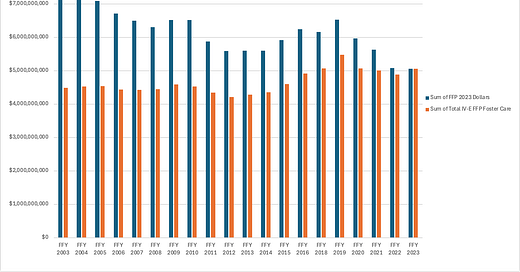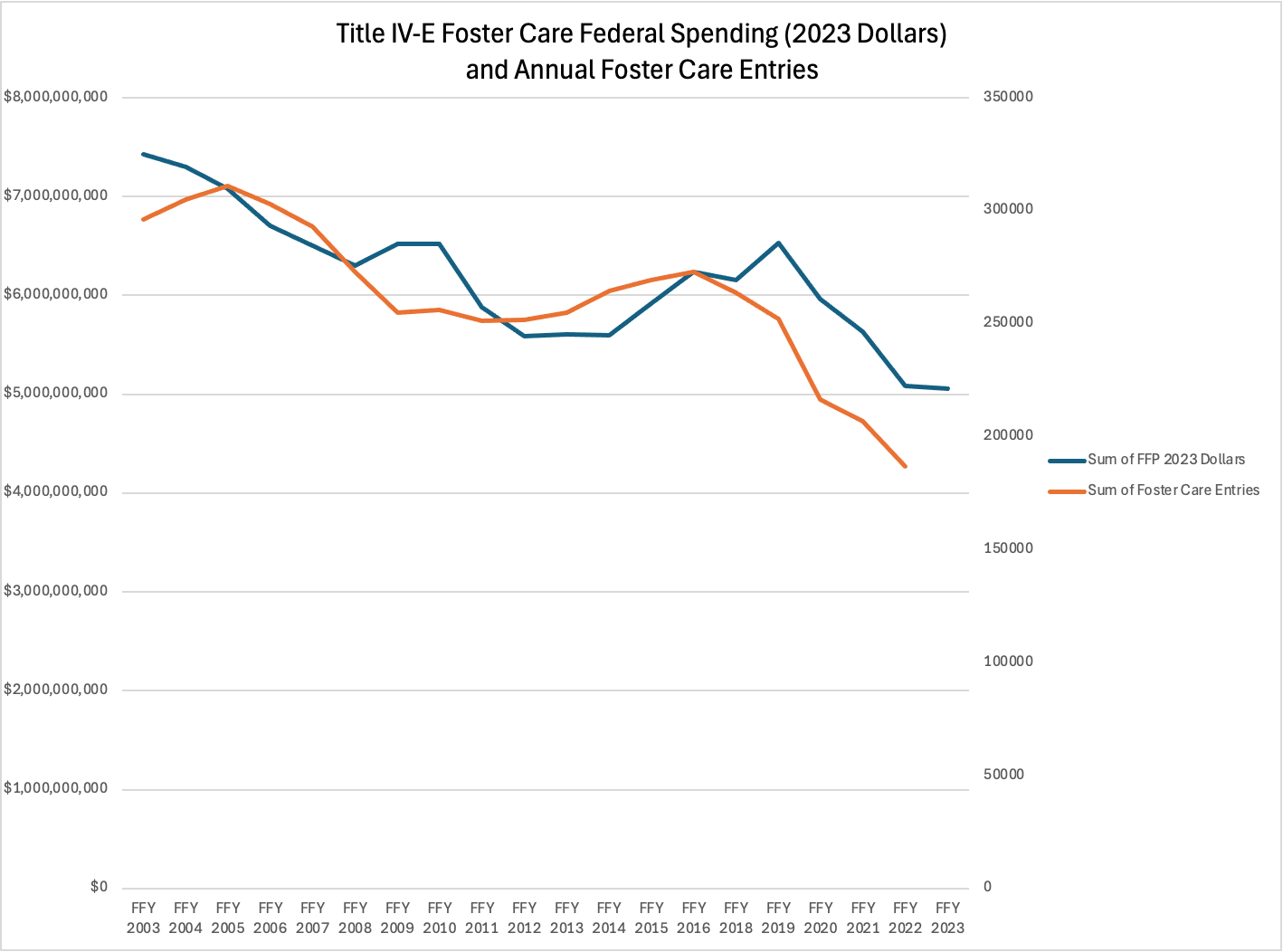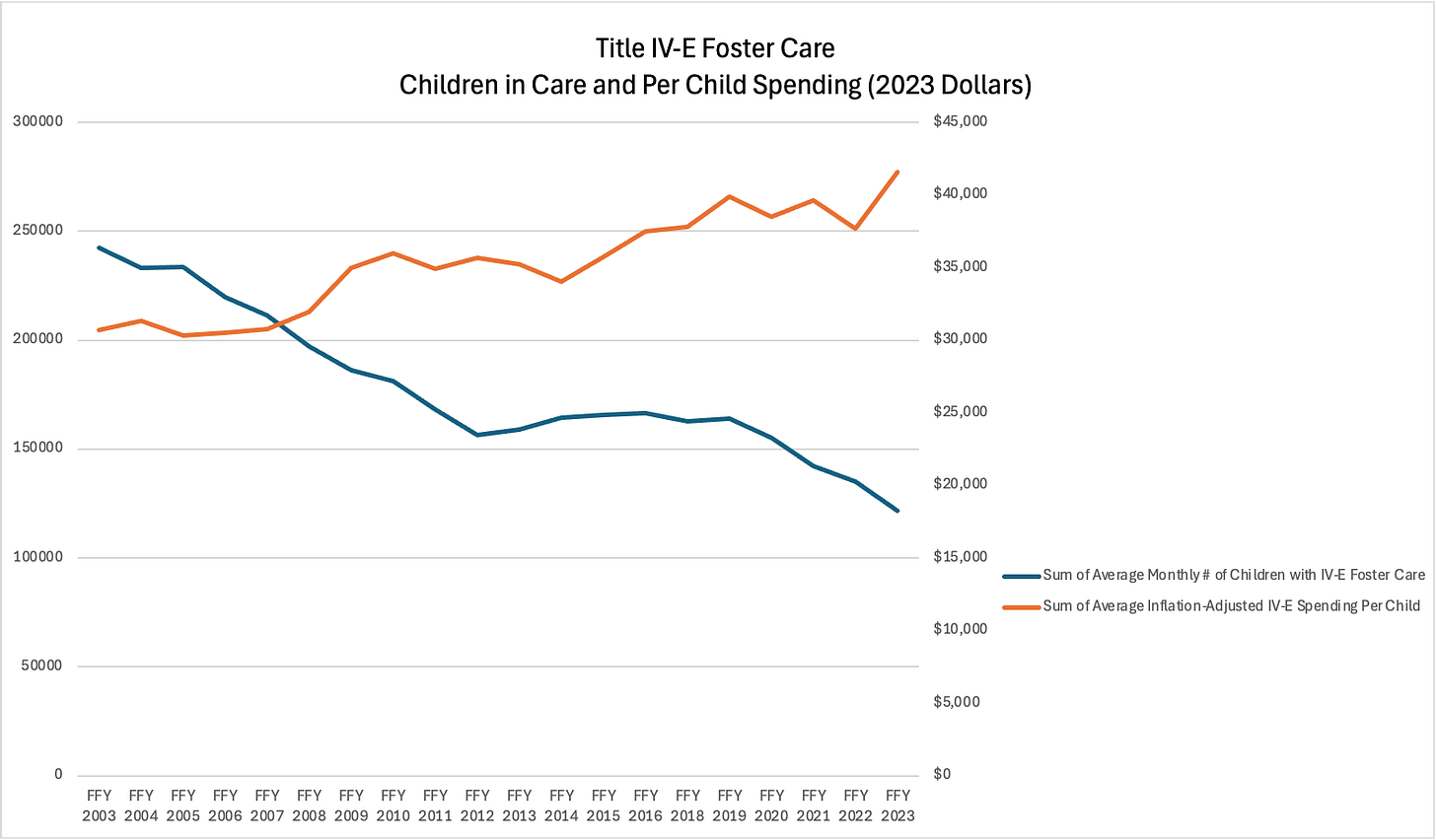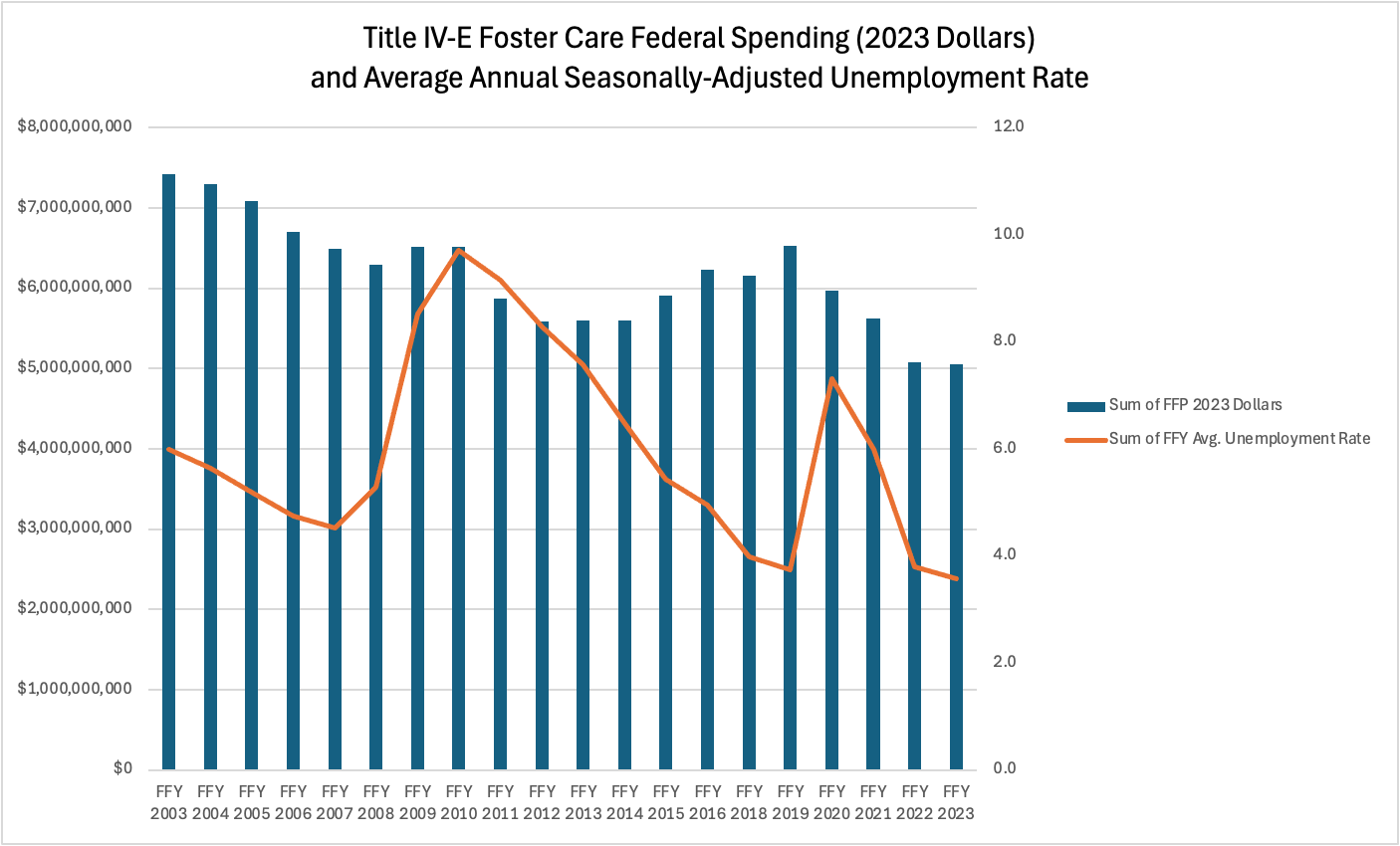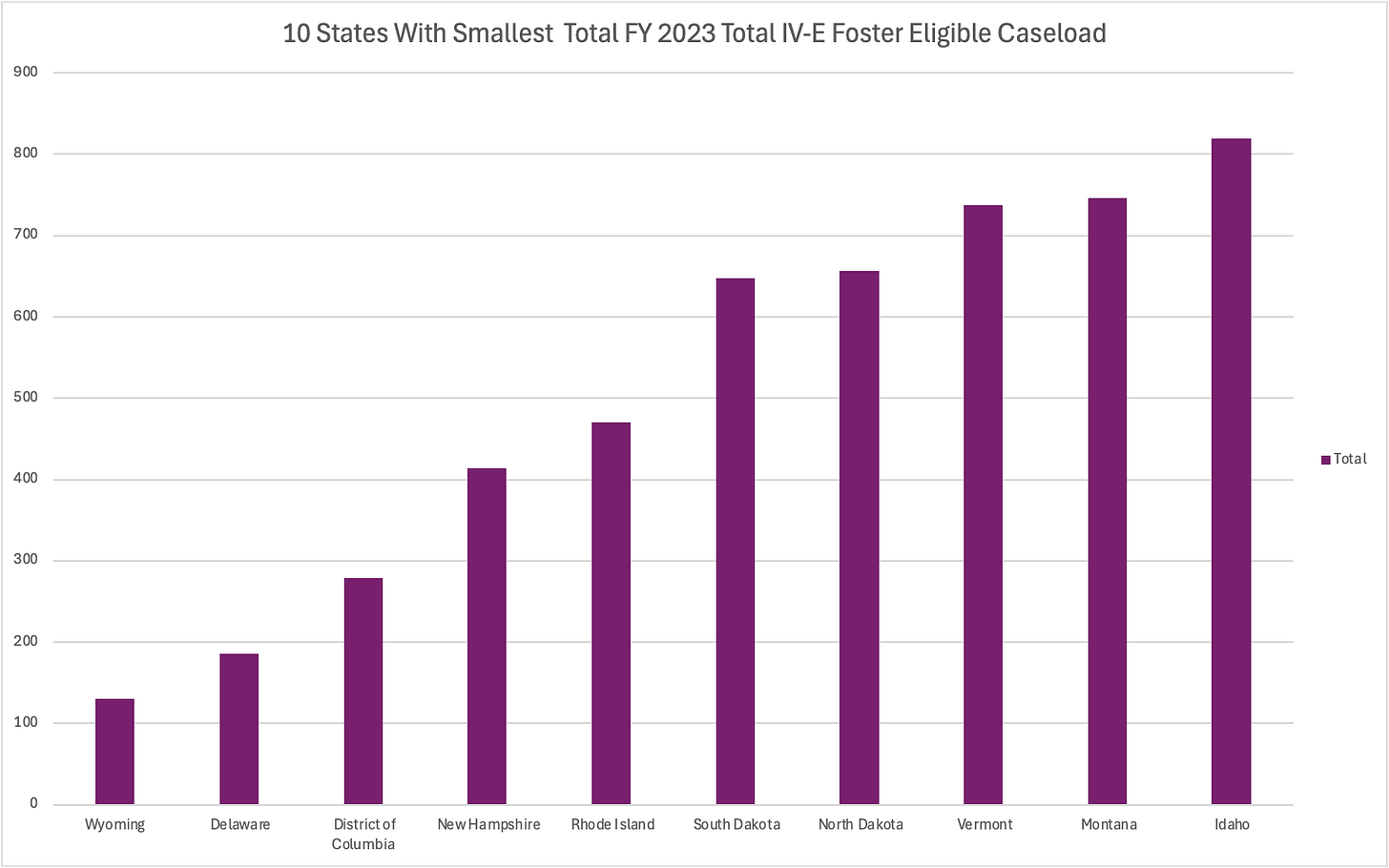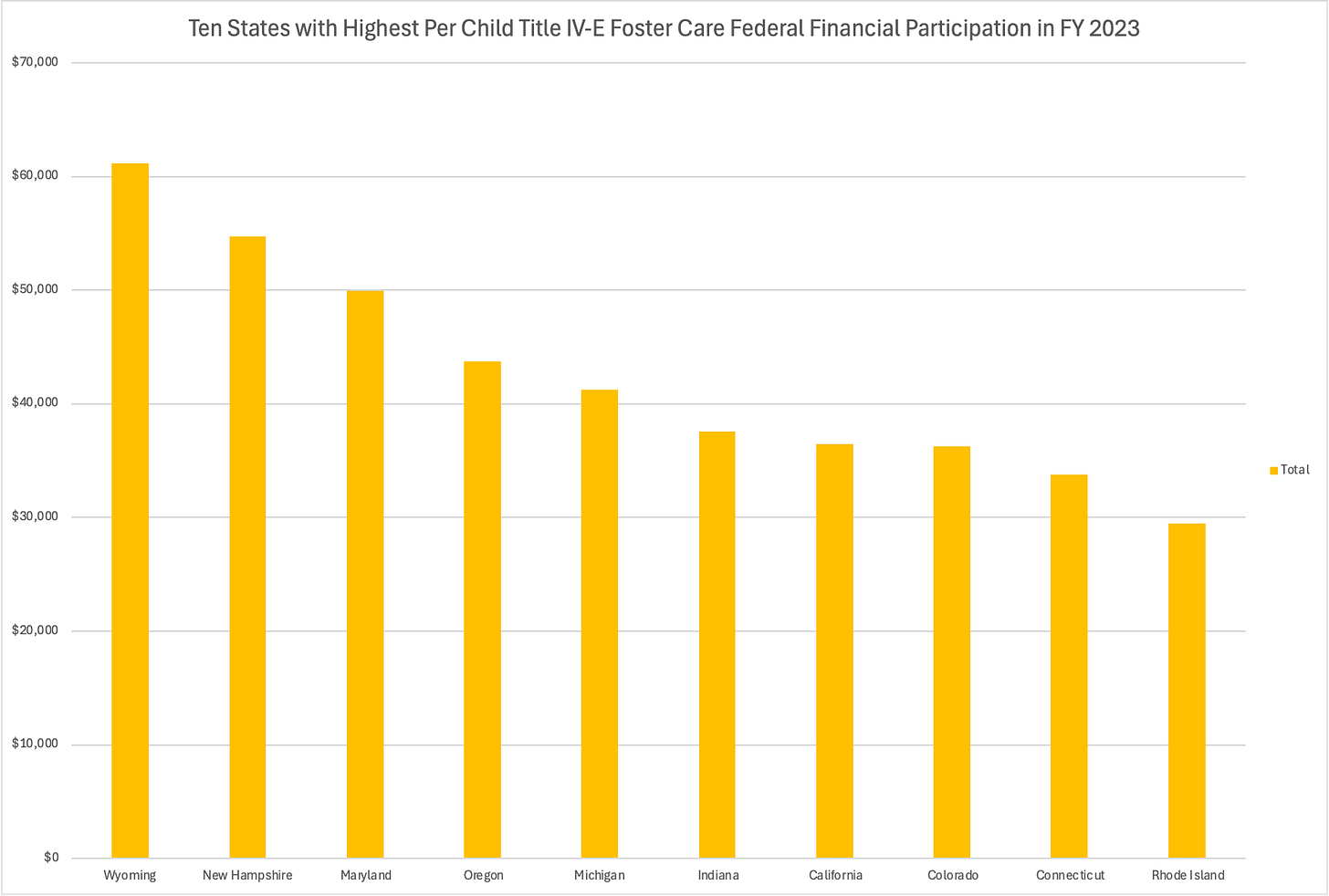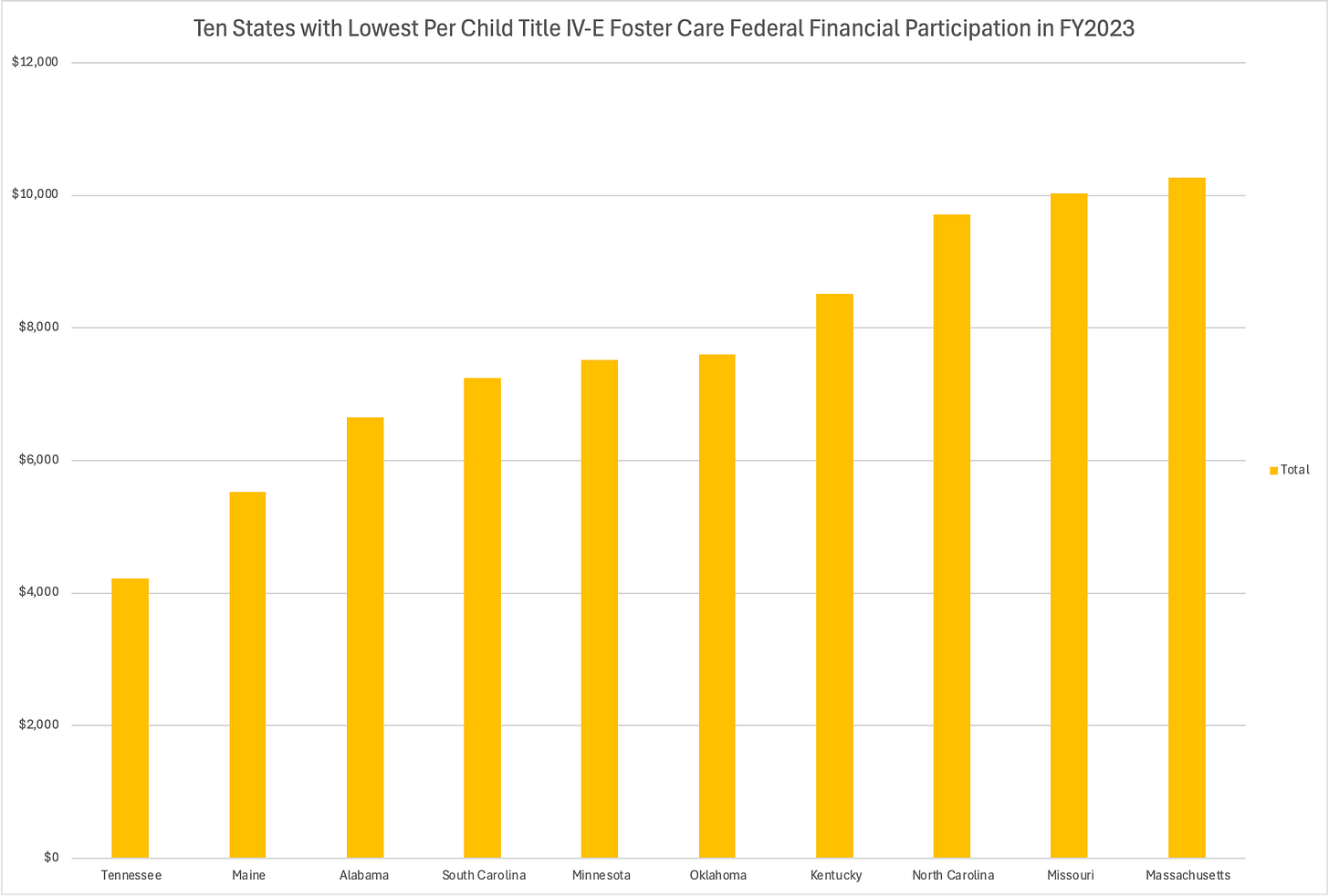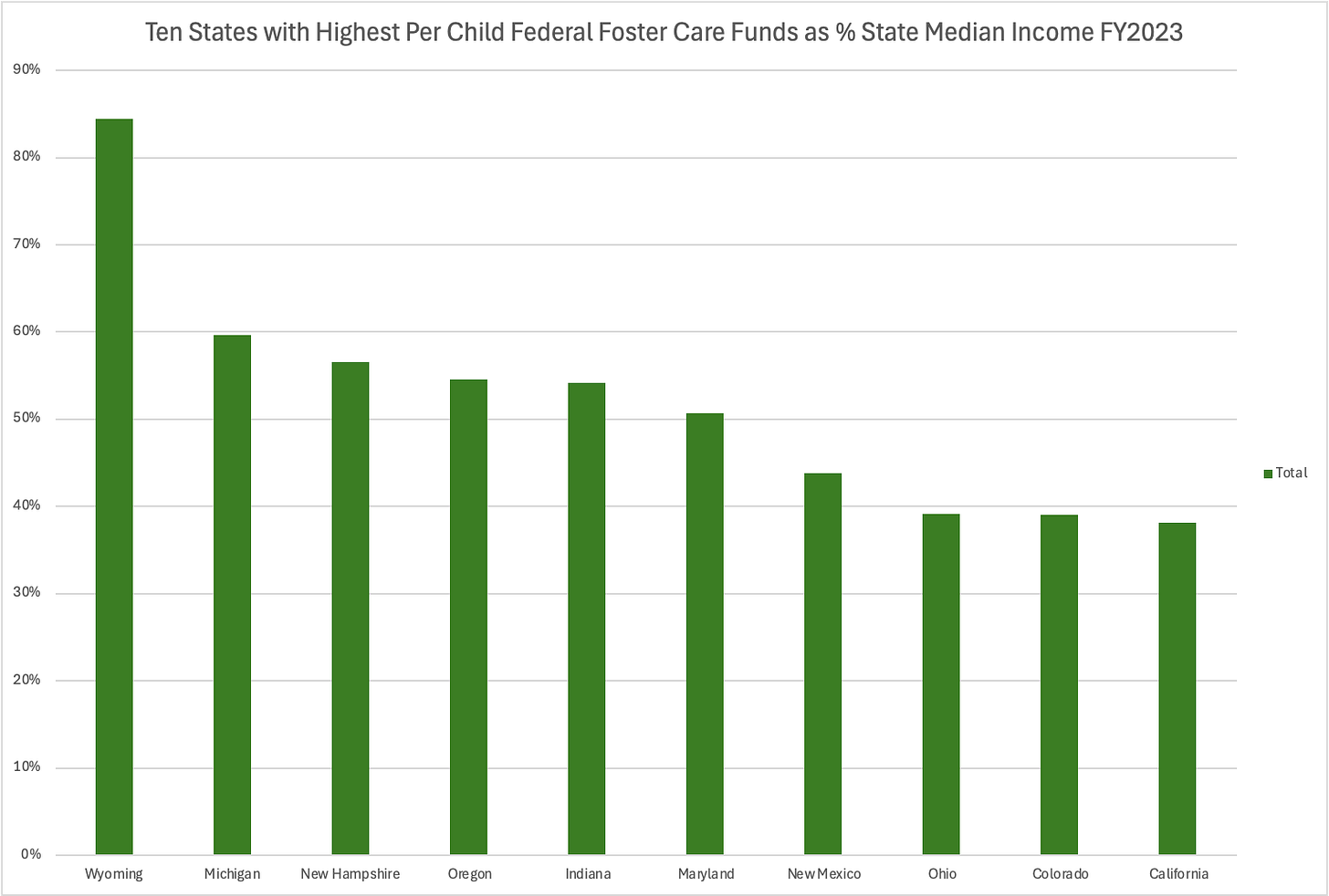
Welcome, Wonks! Hope your bracket isn’t busted yet.
To new subscribers who are joining after listening to my patented Face-Made-For-Radio on NPR Marketplace, welcome!
If you haven’t heard it yet, we discussed key policies related to educational attainment and labor force participation for older youth in foster care, including:
Senate Judiciary Committee Chairman Chuck Grassley’s recent GAO report on Chafee and Education and Training Vouchers; and
The role of Medicaid in covering youth aging out of care.
We’ve got a lot this week, including lots of updates at the U.S. Department of Health and Human Services (HHS) Administration for Children and Families (ACF), including on Temporary Assistance for Needy Families (TANF).
I am also excited to share with you some brand new Child Welfare Wonk data analysis.
Here we go!
ACF to States RE TANF: We’re Watching
TANF First Focus of Immigration Compliance: On March 24th, ACF Acting Assistant Secretary Andrew Gradison announced new immigration scrutiny for TANF.
Recent Action Recap: President Trump’s February 19 Executive Order “Ending Taxpayer Subsidization of Open Borders” calls for assurances that federal benefits not go to anyone unlawfully present in the U.S.
Assistant Secretary Gradison sent a letter to state, tribal, territorial, and local government leaders to underscore that reviews of ACF programs were forthcoming.
ACF Statutory Focus: These policies cite the ACF-administered Personal Responsibility and Work Opportunity Reconciliation Act of 19964 (P.L. 104-193).
PRWORA has always expressly barred anyone unlawfully present in the U.S. from participating in an array of child welfare and related programs, including:
Temporary Assistance for Needy Families (TANF);
Title IV-E; and
Social Services Block Grant (SSBG).
What’s New: Assistant Secretary Gradison has now sent a letter to all TANF administrators, reminding them of their responsibility under the law.
What’s at Stake: The letter is clear; insufficient compliance can lose TANF funding.
Key Quote from the Letter:
I want to remind you that, as a TANF agency, you are responsible for ensuring that sub-recipients and contractors follow all applicable laws related to the use of TANF funds, including prohibitions against providing benefits to illegal aliens. See 45 CFR 75.352(a)(2). A state that provides services or benefits in violation of PRWORA or fails to verify eligibility in accordance with the Income and Eligibility Verification System requirements, 42 USC 1320b-7, could be subject to a TANF penalty.
Key Questions for States: Given that current law already required this approach, state leaders may reasonably wonder:
Whether further efforts are necessary for compliance;
What possible liability they could face for the work of contractors;
What (if any) new staff or tech they need to furnish evidence of compliance; and
How possible TANF cuts under budget reconciliation would affect this work.
What Next: We will continue to keep you apprised about any relevant enforcement action, and anticipate similar communications on other key ACF programs.
Personnel Are Policy: Major Workforce Change at Key White House Office
What’s Happening: Major reforms of the federal civil service is at a little-known but critical office in the White House, suggesting it is advancing toward announcement.
What’s New: Most know the White House Office of Management and Budget (OMB). Wonks also know OMB’s Office of Information and Regulatory Affairs (OIRA).
On March 10, OIRA's website noted that it is reviewing a proposed rule titled “Assuring Responsive and Accountable Federal Executive Management” (RIN- 3206-AO81).
OIRA is also currently reviewing “Improving Performance, Accountability and Responsiveness in the Civil Service” (RIN-3206-AO80).
OIRA Overview: Congress created OIRA in the 1980 Paperwork Reduction Act (P.L. 96-511). Think air traffic control for regulations, but with economic analyses.
OIRA serves as a final regulatory checkpoint for rules. When OIRA approves something, action is imminent.
Context Recap: Child Welfare Wonk has highlighted the multiple executive actions the Trump Administration announced and their implications for child welfare policy.
This included Restoring Accountability to Policy-Influencing Positions Within the Federal Workforce, which would reclassify certain career civil service policy roles.
What It Does: Known as “Schedule F” in Trump 1.0 and renamed “Schedule Policy/Career” in 2.0, it would expedite hiring and firing policy-related civil servants.
What it Changes: You may be asking “why is this guy talking about schedules?! Is he one of those train people or something?” But this matters for child welfare policy.
What it Covers: The announcement applies to “policy-influencing positions,” and would make it easier to hire and fire career civil servants who work in policy roles.
Legal Basis: The reform rests on the Civil Service Reform Act of 1978 (P.L. 95-454).
Title 5 U.S.C. §7511 provides civil servants with certain protections from dismissal. BUT, it makes exemptions which this executive action references, including positions:
“…determined to be of a confidential, policy-determining, policy-making or policy-advocating character.”
How Does it Affect Child Welfare: We don’t yet know the details of who it could impact. Based on the focus, it would likely impact roles related to:
Policy development, like writing regulations at ACF;
Program oversight, like state plan reviews; and
Grant administration, like writing and reviewing funding opportunities.
OIRA Input Opportunity: A key thing to know is that under longstanding Executive Order 12866, OIRA takes meetings on items it is reviewing.
These meetings become part of the formal record, and are an opportunity for interested parties to provide input on regulatory policy decisions.
OIRA is accepting such meetings on this item, though there are not yet records of any occurring. More to come as we know more about this.
Child Welfare Wonk Analysis: States Shoulder Growing Foster Care Costs
We’ve long known states cover over half of all child welfare costs.1 But there’s always more to understand about how child welfare financing is working.
To that end, we reviewed twenty years of previously unpublished public Title IV-E spending data, to learn more for you2.
This analysis looks at foster care covered by Title IV-E of the Social Security Act. Before we dig in, here’s an important refresher on IV-E eligibility.
Title IV-E Eligibility: Our Title IV-E Deep Dive notes that federal funding only covers foster care when a child’s family earns less than the state’s old Aid to Families with Dependent Children (AFDC) limits, without inflation adjustment.
We’ve noted before that the “AFDC Lookback” is a core driver of the falling federal share of child welfare financing. Why?
Federal funding is open-ended but income limited. Inflation erodes the eligible population each year. States, tribes, and localities cover the rest.
Inflation-Adjusted Federal Foster Care Spending Dropped Nearly 1/3 Since 2020
First up, this chart shows you twenty years3 of Title IV-E Foster Care Federal Financial Participation (FFP)4. It breaks it down into both real and inflation-adjusted terms.
You’ll note that while the total federal funding in real terms looks pretty stable for two decades, in 2023 dollars it was about a third higher in FY03.
Fewer Kids Entering, Lower Spending…
This next chart shows the trends of both Title IV-E federal foster care spending in inflation-adjusted terms, and the annual number of kids entering care.
Total Federal Spending Dropped, But Per-Child Federal ROSE
Here’s where things get interesting. While entries and spending track, things change dramatically when you look at per-child federal spending.
While total federal spending is down, measured per-child it’s way up. That suggests that the eligible population is shrinking, and more of foster care is left to states.
Did Waivers Delay the Trend?
The next chart shows how inflation-adjusted total federal foster care spending and per child spending trend over this period.
For about ten years they link up and move together. What’s happening there?
One hypothesis is the Child and Family Services Improvement and Innovation Act (P.L. 112-34).
It offered states waivers from Title IV-E rules. They experimented with prevention and other innovations, but also just did their usual work with way less eligibility math effort.
This suggests that may have made it possible to cover more children through the waivers, which sunsetted right around when the lines diverge.
Unemployment and Federal Foster Care Spending
This last one looks at inflation-adjusted Title IV-E federal foster care spending and the average annual seasonally adjusted unemployment rate.5
There seems to be some general trending together when both decrease, but not a commensurate increase to accompany a jump in unemployment.
FY23 Analysis: State of The States
To bring it all home, we also have for you an analysis of state claims of federal Title IV-E foster care funding in FY2023, the most recent data.
Biggest and Smallest IV-E Eligible Foster Care Caseloads
These two show you the top 10 largest and smallest total annual caseloads of kids who were in foster care and eligible for IV-E.
Per-Child Federal Spending
These show top 10 highest and smallest average per-child federal claims by state.
Why it Matters: States with lower reimbursement rates6 face investment tradeoffs between direct services and the administrative functions needed to maximize claims.
Adjusting Average Per-Child Federal Spending for Income
To control for variability across the country, these are per-child average claims, as a percentage of the state’s median income7.
We hope you enjoyed this wonktacular analysis, and look forward to bringing you more! What else do you need, wonks?
An Insurance Market Crisis You Haven’t Heard About
What Happened: Last week the American Enterprise Institute (AEI) released a policy brief proposing reforms to the foster care insurance market to address
Who Wrote It: A wide-ranging group of prominent child welfare researchers, writers, service providers, and current and former agency leaders.
The Possible Market Failure: Insurance for private providers of foster care services. These private agencies handle foster care placements and support for the state.
States like California and Illinois are seeing providers struggle to obtain coverage, and some are worried it will impact their child welfare systems.
What’s At Issue: States that changed statutes of limitation or had large jury awards for institutional abuses decades ago have seen turbulence in their insurance markets.
Those concerned about these developments argue that unaffordable insurance for foster care provider could lead to more difficulty finding appropriate placements.
What’s Not Yet Clear: How widespread an issue this is. Outside of the handful of states the report names, there are not yet comprehensive public data available.
What They’re Proposing: The signatories to the paper offer several policy options for possible federal intervention to ensure a stable insurance market, including:
Create a Victim’s Fund. A program for compensating children who experience abuse, as an alternative to jury awards.
Pool Risk. Spreading risk across more agencies to promote premium affordability.
Condition Federal Funds on Limited Liability. Compel states to create a ceiling on jury awards.
Offer Safe Provider Discounts. Offer lower premiums, capped damages, or other benefits to providers who pass audits and other safety compliance reviews.
Subsidize Coverage. Require states to subsidize coverage for providers.
What Next: We will continue to monitor this issue. Is your state concerned about it?
States See Uncertainty with Reversal of Medicaid Social Determinants Policy
The News: On March 4, the U.S. Centers for Medicare and Medicaid Services (CMS) Center for Medicaid and CHIP Services (CMCS) rescinded policy on social determinants of health.
The Policy: CMCS Deputy Administrator Drew Snyder sent a CMCS Informational Bulletin titled Rescission of Guidance on Health Related Social Needs.
Prior Policy: CMS had said HRSNs “can account for as much as 50 percent of health outcomes.” Medicaid covering them was meant to improve outcomes and lower costs.
What Kind of Services This Meant: Prior guidance had outlined an array of services to address a person’s home and social environment to promote health, including:
One-time expenses to help with getting into new accessible housing;
Home improvements and modifications to address issues like mold and pests; and
Help buying food for a specialized diet tailored to a person’s condition.
What the New Policy Rescinds:
A December, 2024 CMCS Informational Bulletin Coverage of Services and Supports to Address Health-Related Social Needs in Medicaid and the Children’s Health Insurance Program
An accompanying document known as the “Framework of Coverage of HRSN Services in Medicaid and CHIP”.
What Comes Next: With the rescission of this guidance, state plans and waivers that relied upon it will likely face potential review and oversight questions.
DEI No-Fly For Head Start Training
The Latest: On March 21, ACF announced it is disallowing federal Head Start funding for training or technical assistance related to diversity, equity, and inclusion.
Legal Basis: The announcement is designed to implement the Executive Order “Ending Radical And Wasteful Government DEI Programs And Preferencing”.
The Communication to Grantees: Acting ACF Assistant Secretary Andrew Gradison sent Head Start grant recipients an email reading:
Dear Head Start recipients,
The Office of Head Start will not approve the use of federal funding for any training and technical assistance (TTA) or other program expenditures that promote or take part in diversity, equity, and inclusion (DEI) initiatives. This includes expenditures for services provided by contractors or vendors.
With your next application submission, Head Start grant recipients should carefully review their annual funding application, including the budget and budget justification narrative, TTA plans, program goals, and any other supplemental materials to ensure they are in accordance with this change.
Please direct any questions regarding this guidance to your regional office.
/ Andrew Gradison /
Andrew Gradison
Acting Assistant Secretary
Administration for Children and Families
Child Welfare Policy Implications: As ACF continues implementation of this Executive Order, similar announcements are reasonably likely for other ACF programs.
Have a good week, Wonks!
See page 13 from ChildTrends’s SFY 2020 survey
This analysis draws on Title IV-E expenditure data from the Children’s Bureau. And as always, the most recent data from the Form CB-496 (FY23 as of now) are a treasure trove of information.
Note for all of this analysis- the Children’s Bureau did not publicize data in FY2017, so we omitted it.
FFP is the federal share. So this tracks what the feds reimburse, not the total cost.
And before you come at me to argue that these are calendar years and fiscal years, stop. Yes wonks, I went through an re-averaged twenty years of monthly unemployment data for you, so that they match perfectly.
Which stem from the state’s FMAP rate, or administrative burden of eligibility determinations, or both…
From the Census Bureau’s American Community Survey

